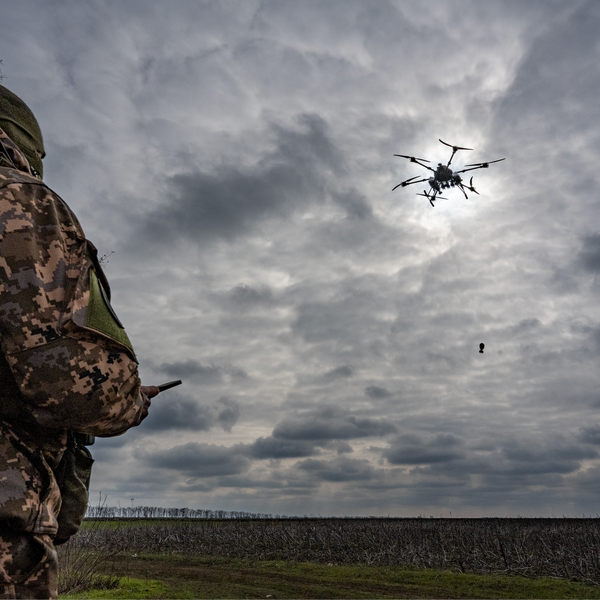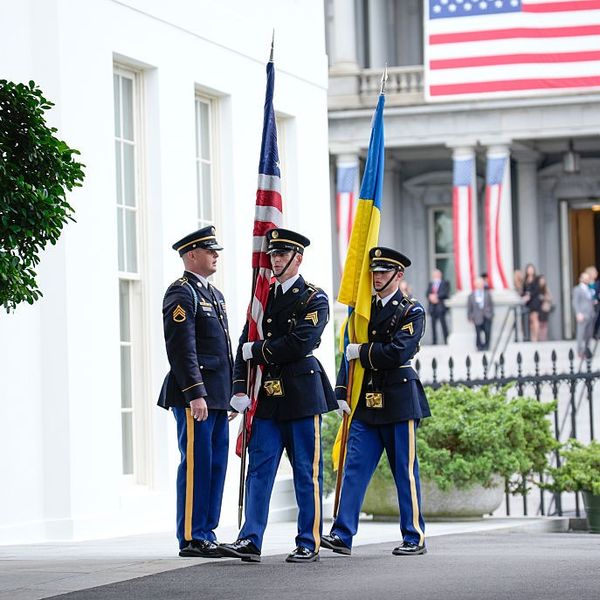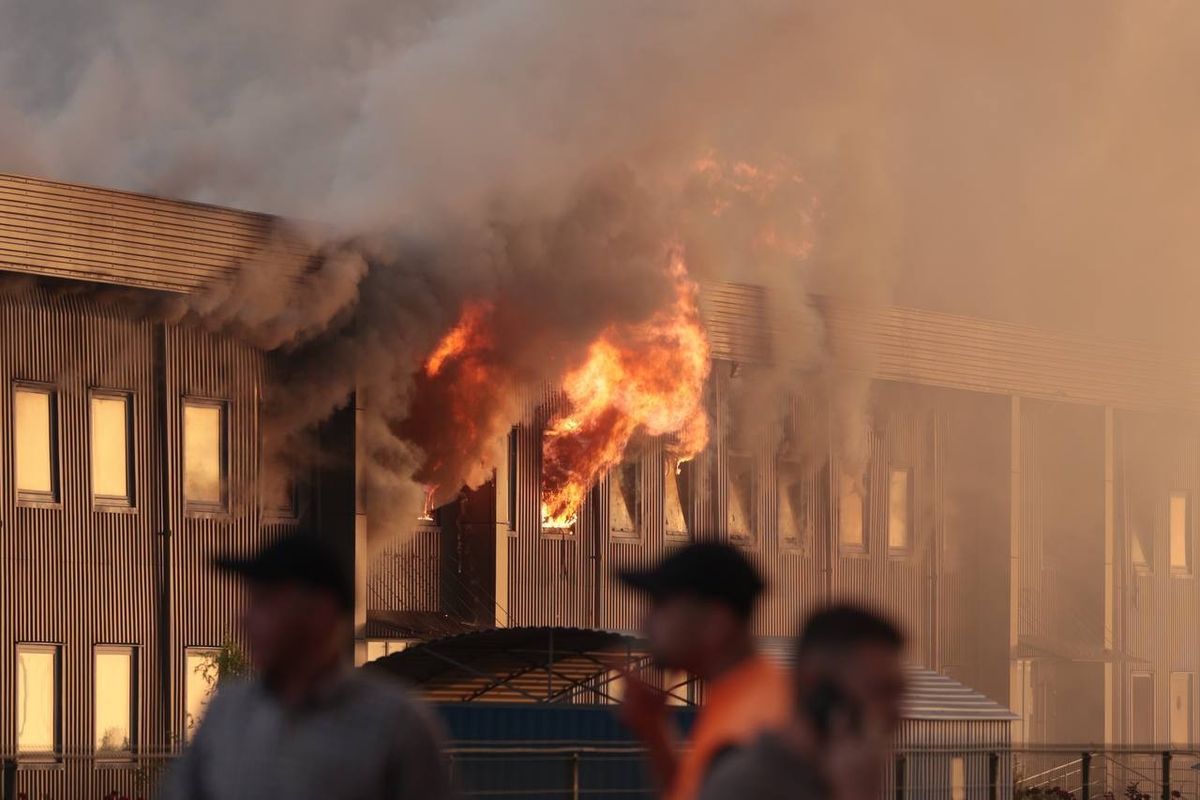OPINION — The Senate Armed Services Committee has recognized the vulnerabilities of today’s unmanned aircraft systems (UAS) and called on the Defense Department “to develop new concepts of operations to effectively employ [these] platforms not inherently designed for operating in contested environments.”
The relatively slow flying MQ-1 Predator, MQ-9 Reaper; RQ-4 Global Hawk; RQ-170 Sentinel and smaller remote piloted aircraft (RPAs) have become the prime ISR [intelligence, surveillance and reconnaissance] and attack vehicles for use against terrorist groups over past decades. In that time they have changed military tactics by allowing long, loitering times over targets without endangering air crews.
The Air Force RPAs operate through what are called remote split operations. Launch and recovery crews are stationed at overseas bases along with the unmanned aircraft. They control take-offs and landings. The RPA pilots and sensor operators, who direct the aircraft to targets and carry out the mission through electronic links, are at locations within the U.S.
The split operations result in fewer personnel being deployed overseas, and allow control of many widely scattered unmanned aircraft from one continental U.S. location, thereby simplifying command and control functions.
“I’ve been with this weapons system since its very beginnings, and I don’t know if there’s another weapons system that’s had more impact, quite frankly, on the fight that we’ve been in for the last 19 years,” Air Force Chief of Staff Gen. David L. Goldfein told members of an MQ-9 squadron on June 20, at Creech Air Force Base in Nevada, home of a command and control facility for overseas UAS operations.
However, in its June 23, report on the fiscal 2021 Defense Authorization bill, the Senate committee showed concern for what it called “Unmanned Aerial Systems in Great Power Competition,” where prospective enemies such as Russia and China, unlike terrorists, have air defense systems that could knock down these large and slow U.S. unmanned aircraft.
As a result, the Senate panel directed the Secretary of the Air Force “to submit a report…no later than November 30, 2020, detailing the strengths and vulnerabilities of UASs in a National Defense Strategy-envisioned environment and the tactics, techniques, and procedures that would allow for the survivability of UASs in scenarios pitting the United States against near-peer adversaries.”
Ironically, the Pentagon itself has already begun to deal with the issue.
In fact, Goldfein’s appearance at Creech last January was in connection with the shutting down of the 42nd Attack Squadron, the first unit to fly the MQ-9 Reaper in combat operations 13 years ago. The Air Force decision to make the 42nd dormant was an example of changes taking place within the unmanned aircraft field.
At the time, Col. Stephen Jones, commander of the Air Expeditionary Wing said, “It was not an easy decision to place the squadron in a dormant status, however doing so will help our community better prepare our remotely piloted weapons systems to thrive in the contested environments of the future.”
The squadron had flown 180,000 hours of combat and 11,246 sorties, 24/7 out of Creech AFB, while at the same time refining the mission and innovating things such as the “Frankenphone,” a device that streamlined communications among ground forces fighting in Afghanistan with RPA pilots, their sensor operators, and joint terminal attack controllers, back in the U.S..
The Defense Department’s fiscal 2021 budget, reflecting change, contained no funds for new MQ-1 Predators and money only to begin shutting down production of MQ-9s. Instead, the Pentagon wants over $200 million for research into “long endurance” unmanned vehicles “to provide persistent, over-the-horizon, surveillance, targeting, and tactical communications capability.”
The Air Force also is seeking $219 million for research and testing of the XQ-58 Valkyrie, an unmanned, stealthy, small combat aircraft, more than one of which could be directed in combat by a single piloted F-35 aircraft. The Senate committee, recognizing the future rests with smaller, faster combat UAVs, added over $100 million to the Air Force’s XQ-58 request.
Defensive systems for countering enemy unmanned aerial systems are another Pentagon priority for which additional funding and attention are being sought, and which both Senate and House Armed Services Committees approved.
However, the Senate committee also added $165 million in the authorization bill for additional MQ-1s, and shifted another $170 million for purchases of MQ-9s. Some $120 million of that amount was originally to be used for shutting down its production.
Meanwhile, at the same time that the Air Force is moving away from traditional RPAs, a Government Accountability Office (GAO) report, released last Thursday, found the Air Force does not have the required number of pilots and sensor operators for U.S. unmanned aerial systems to meet the number of 2020 expected worldwide combat flying hours.
As of September 2019, there were 1,320 pilots assigned to remotely piloted aircraft, although 1,625 were authorized. “Current projections indicate that the pilot deficit will continue into the near future, the GAO said, adding that “while the number of assigned RPA pilots actually grew in fiscal year 2019, increases in the requirements for this career field reduced or negated the effect of the increase.”
At the same time, a gap has developed in the number of authorized and assigned sensor operators. GAO reported that in September 2019, the authorized number of sensor operators was 1,277, while the number assigned was 919.
Adding to the problem is the Air Force staffing shortage when it comes to the number of instructors for new RPA pilots and sensor operators at its formal training unit. “To help address the effect of the instructor gap, officials temporarily reduced the length of training,” according to the GAO report.
Quality of life for the RPA force was also addressed using 14 focus groups at three continental operating bases: Shaw Air Force Base, South Carolina; Cannon Air Force Base, New Mexico; and Creech.
One of the major findings, according to the GAO, was that participants in 13 of the 14 groups stated, “Witnessing or causing violence has a negative psychological impact, but two-thirds of our survey respondents (66 of 105) said that the Air Force has not assessed their level of stress and fatigue related to their role as an RPA pilot or sensor operator.”
Another issue in 13 of the 14 groups was that “shift work has negatively affected their family or social life.” Since shifts, “Rotating shifts [which rotate between five and eight weeks] and the limited time with family creates a dilemma on weekends for personnel, especially for those on the midnight shift that covers roughly midnight to 8 a.m.,” according to the report.
RPA personnel must either maintain their work/sleep schedules, or align those schedules of their families. As a result, health officials at one base told the GAO, “It is well known that RPA aircrew members often do not accurately report how much rest they get.” One official was quoted saying, “We did an internal survey of how much sleep people on nights for months at a time were getting, and it was like 3-4 hours. And they are flying combat for 8-12 hours at a time.”
The Air Force has set 2024 as the goal for reaching its combat-to-dwell policy, which is “intended to balance the time RPA units spend in combat with non-combat activities, to provide relief from those combat operations that it has conducted constantly for many years, and to improve the quality of life of these RPA aircrew members,” according to the GAO report.
The GAO concluded if it missed that goal “a key component of the Air Force’s workforce will not be well-positioned to meet its mission for the nation.”
Read more expert-driven national security insights exclusively in The Cipher Brief












